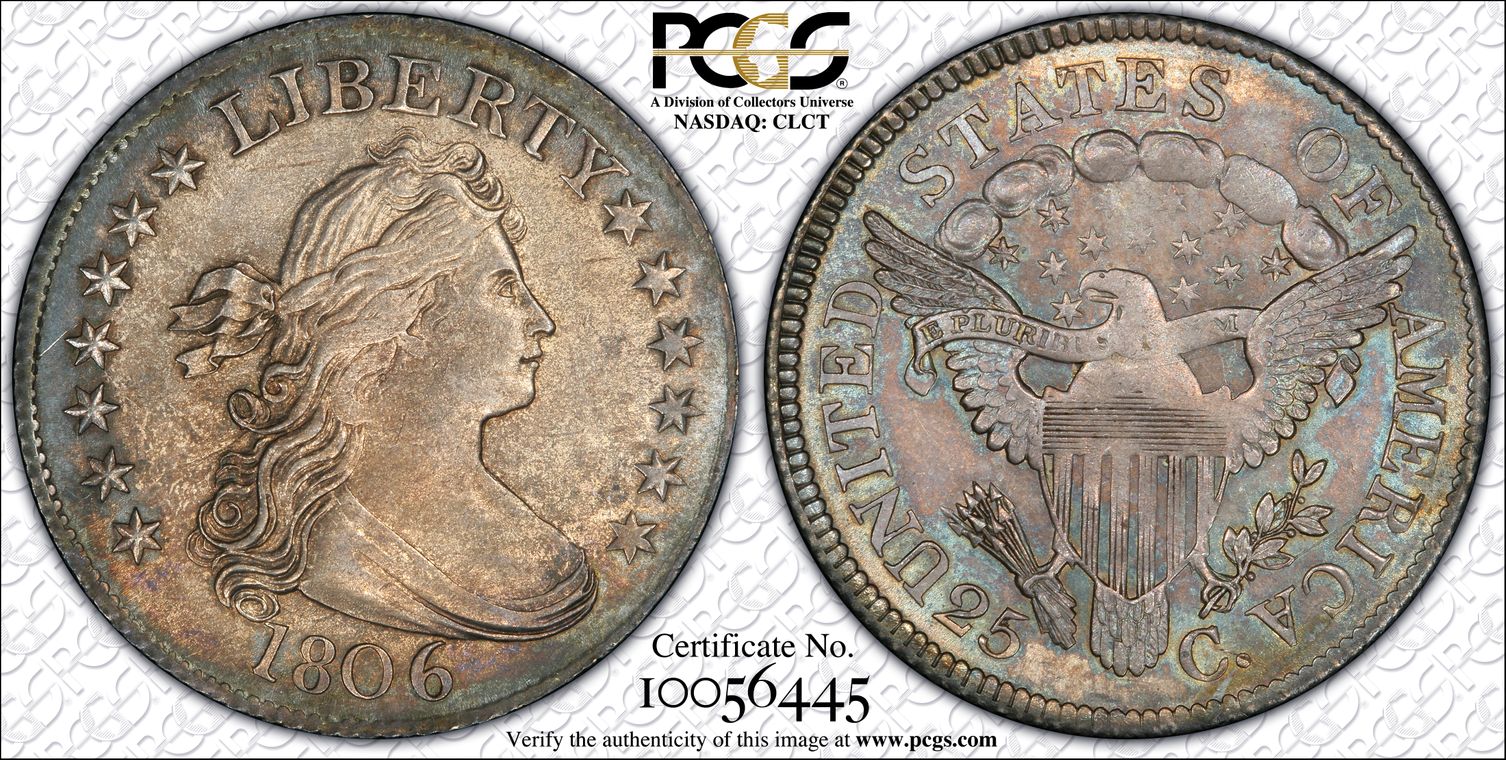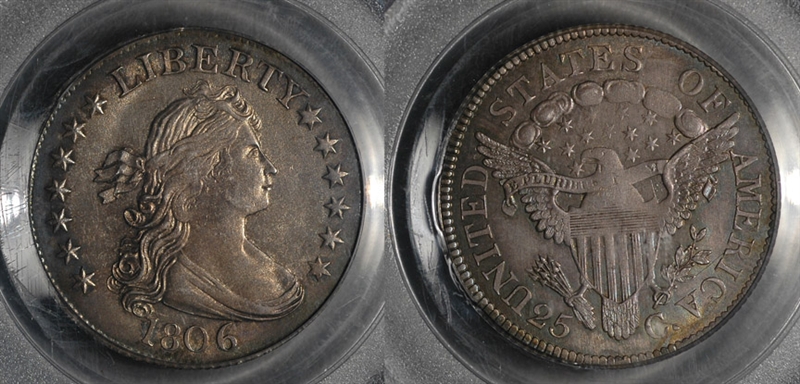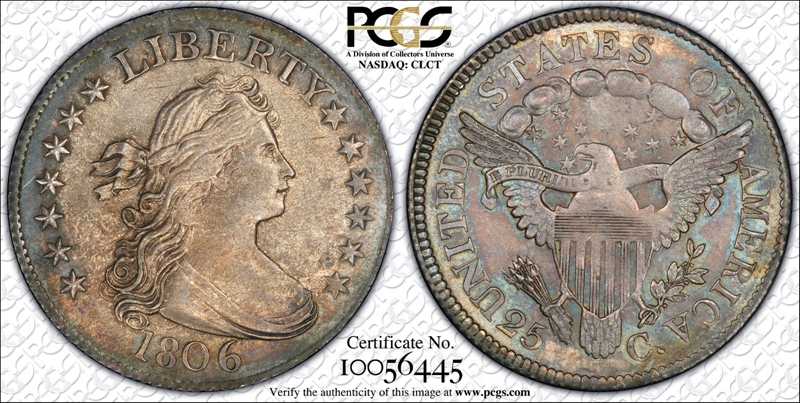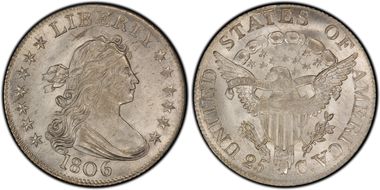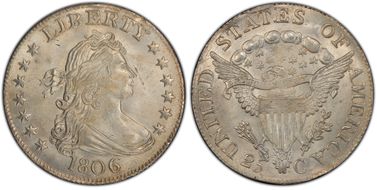拥有者评论
1806 25C MS63 B-3, R.1. A satiny and refreshingly unabraded Select Mint State example of this scarce early date. Tan-brown color graces most of the obverse, bounded by blue-green toning near the rims. The reverse is equally colorful, and features areas of aqua-blue and lavender patina. Some bluntness of strike in the centers and on the right side stars, not uncommon for the Draped Bust type. The superb, talented engraver Joseph Wright, designer of the Liberty Cap cent and half cent, was the first full-time engraver hired at the Philadelphia Mint. Tragically, he died in September 1793 during one of the annual yellow fever epidemics that killed so many early Philadelphia residents. Robert Scot was hired only two months later as chief engraver, a post he held until his death in 1823. Scot was born in 1744 and was already 50 years old when he began working for the Mint. Although Scot was later criticized for his modest talent and slow work style, among his improvements at the Mint were the use of device punches; for example, the whole head of Liberty, so that only the date, stars, and letters required addition to the working dies. By 1807 Scot, then 63, faced serious competition from a younger rival, John Reich, who was much more talented judging from each man's artistic accomplishments. Breen writes in his Complete Encyclopedia: "John Reich sold himself into indentured service to escape to the USA from the Napoleonic Wars. As early as 1801 his name came to official attention as one of the finest engravers in the country. Opposition from Robert Scot prevented the Mint from hiring him except for occasional odd temporary assignments. But in 1807, Scot's health (for which read failing eyesight) was a source of serious concern to officialdom; accordingly, the Mint hired Reich as assistant engraver at a pittance of $600 per year. "Reich's first assignment was to create new designs for gold and silver denominations: an insult to Scot. The first ones to benefit from Reich's attention were the denominations most in demand at banks: half dollars and half eagles." In 1796 and 1797 only the the Draped Bust (a.k.a. Fillet Head) obverse was combined with the Small Eagle reverse, which was in turn replaced in 1801 by the Heraldic Eagle reverse, an imitation of the Great Seal of the United States. Both designs are attributed to Robert Scot. In 1807, the last year of the Draped Bust quarter design, Reich joined the Mint as assistant engraver and the half dollar designs were modified yet again, this time to the familiar and ubiquitous Capped Bust or Turban Head design. Liberty now faced left and wore the Martha Washington-style "mob cap" on her head. The reverse features a more naturalistic eagle, although it bears a small shield attached to the center of its breast. The quarter was considered a less important denomination and didn't resume production until 1815, eventually also adopting the Capped Bust design.




















